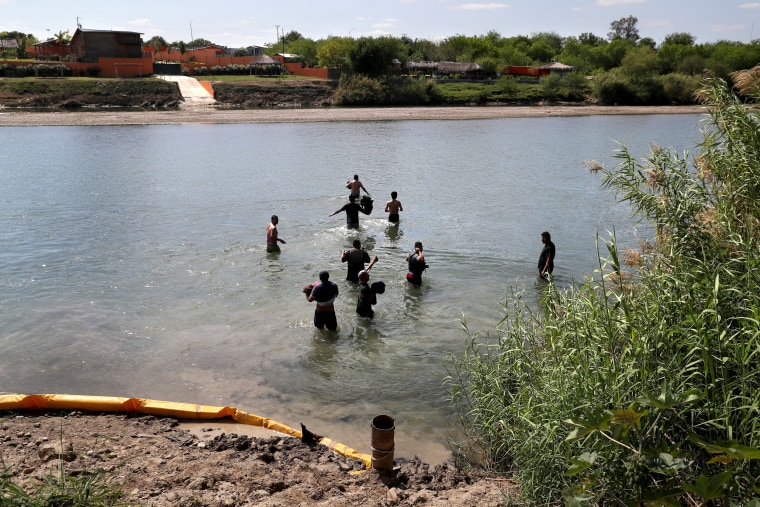ROMA, Texas — This small border town is hitting a wall.
This past week, the border security deal reached by Congress and signed by President Trump set aside $1.35 billion for fencing and barriers at the border. Apart from the national emergency Trump declared to secure additional billions for the border, the funding deal spelled out that a wall could not be built in Roma until there’s more input from the community. Local elected officials in several specific towns, including Roma, and the Department of Homeland Security now have until Sept. 30 to reach agreements on where exactly the barriers will go.
In Roma, there are absolutely zero barriers between the United States and Mexico. The town with its population of about 11,000 sits just across from Ciudad Miguel Aleman, Mexico. Without a wall, fence or even barbed wire to separate the two countries, the town is vulnerable, according to Customs and Border Protection — but many in the community disagree.

The border wall that is slated to go up in Roma would separate most of the community from the Rio Grande River. For people in here, the river is part of their community. Children, from both countries, play in the Rio Grande while men fish from the riverbank.
"The biggest concern we had with the border wall is, 'Will it displace residents in our community?'" said Freddy Guerra, Roma’s assistant city manager. The town is about an hour’s drive west of McAllen, the largest city in Hidalgo County — the area where construction on new portions of border barriers was set to begin in February.
The Rio Grande Valley is the part of South Texas that sees the most illegal border crossing, although that number overall has dropped dramatically over the last two decades.
The 150-acre plot of land in Roma that belongs to Noel Benavides, 75, has been in his family since the 1700s. He dreamed of giving the land to his grandchildren. Now, he fears the government will take part of his land away from him to build the wall.
“It is very personal,” he said. “Just like it is for Mr. Trump.”
For Juan Moreno, who teaches math at Roma High School, he fears his son won’t be able to enjoy the same upbringing he did as a child.
"As a child, the woods between my house and the river were like my playground, and in a sense, this same area continues to be my playground," Moreno said.
On his weekly kayak rides down the river, Moreno says he sees a part of life that we wouldn't have access to if they built a wall between his house and the Rio Grande.
But Moreno says he understands why border patrol agents would want a wall. He admits he sees undocumented immigrants crossing the river on a daily basis and understands why people want the wall to go up.
“We do need a wall — or as most folks are saying now — an ‘enhanced barrier,’” said Ross Barrera, the chairman of the Star County Republican Party. “There's got to be some type of deterrence.”
But some locals worry it could be built through neighborhoods closest to Mexico, breaking up communities and potentially forcing people out of their homes.
Roberto Salinas, Roma’s mayor, said he’s concerned that new fencing in the area could create flooding problems.
“I think for the people who live here, the biggest frustration is that they don't really know anything about what's going on," he said.


